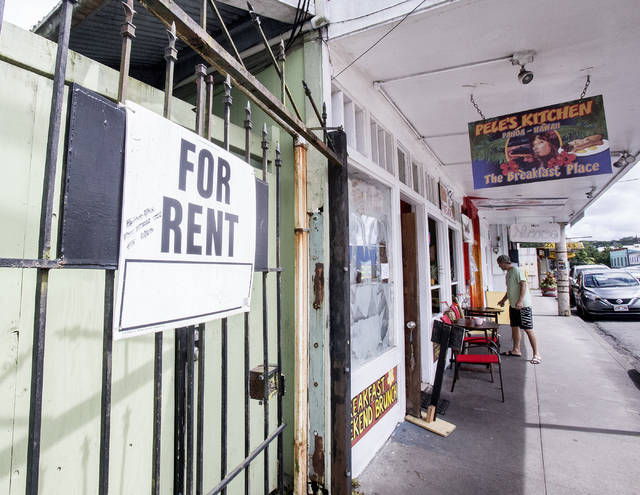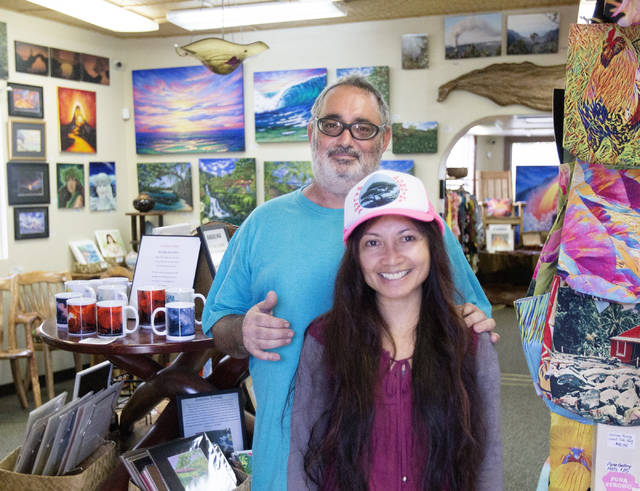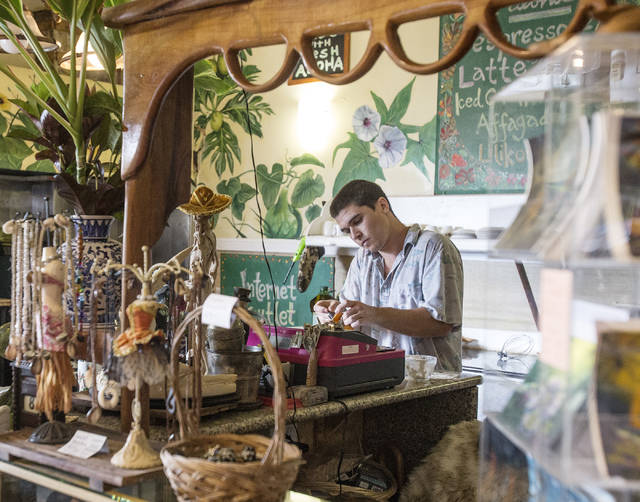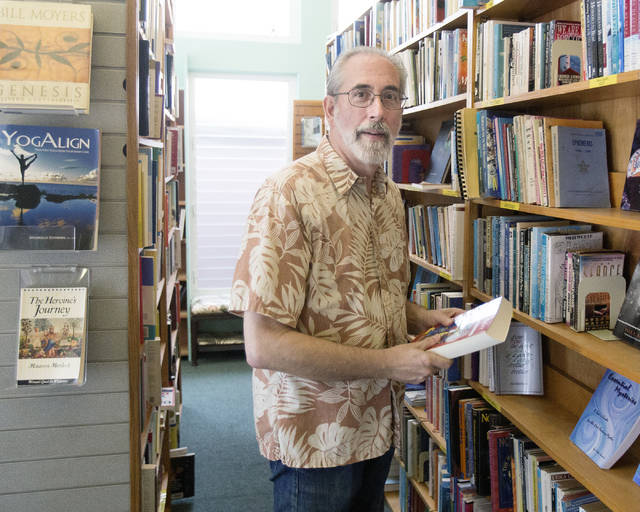Nearly two months after the apparent pause in volcanic activity in lower Puna, Pahoa businesses are struggling to stay afloat.
The town took an economic hit earlier this year when the Kilauea eruption began May 3 in Leilani Estates, as visitors avoided the island in general and lower Puna in particular. Then, the town suffered a second blow when the eruption paused: Now visitors have stopped going to Pahoa to try to see the lava.
“They say, ‘If there’s no flow, they no go,’” said resident Althea Yabes.
Yabes’ husband, Amedeo Markoff, said the eruption wiped out much of the town’s economy — 40 percent, he estimated — and left it with fewer attractions to drive visitors to return.
“It’s way more than just 700 homes,” Markoff said, referring to the number of homes destroyed by lava. “Say half of those were bed-and-breakfasts, say they get four visitors a week. You do the math. You’re talking about thirty, forty thousand visitors a year. And then you have all the people servicing those places: the maids, the cleaners, the guys who clean the yards.”
Markoff, a member of the Mainstreet Pahoa Association and owner of the Puna Gallery and Gift Emporium, said several businesses already closed down, while many of the rest are hanging on by a thread.
“We’re doing terrible,” said Stephen Yundt, owner of Pahoa restaurant Pele’s Kitchen. “We are up from one-quarter of our usual to one-third. The restaurants on both sides of us have already closed down.”
Dean Kelley, owner of Pahoa Used Books and Movies, acknowledged that September and October are typically some of the leanest months in terms of Big Island visitors. However, he said, business to his bookstore is down by more than 35 percent.
“It’s been tough to see some days you only make four or five sales,” Kelley said. “And sales here are cheap.”
Nyle McQueen, manager of the Pahoa Village Museum, said he thinks his business has seen a slight upturn in visitors recently, but added that a lot of residents left the area during the eruption, either temporarily or permanently, and tour buses have been uncommon.
Sean Crown and Ashley Campbell, co-owners of Nicoco Hawaiian Gelato, said visitors to the recently reopened Hawaiian Volcanoes National Park often are not directed to Pahoa.
“They say they had no idea we were here, and then they discover us, and that’s all great, but it would be better if there was better signage,” Campbell said.
The refrain echoed by Campbell, Crown and most of the Pahoa business community was three simple words, Markoff said: “No viewing area.”
Markoff said that, despite long discussions about a possible lava viewing area near Pahoa, no concrete plans have yet been made. The delay, he said, will be costly for Pahoa businesses, which, without a steady stream of local traffic and commuters, will have to rely solely on visitors and tourists.
“The county’s inaction is going to cause more closures,” Markoff said.
Pahoa restaurateur Salvador Luquin said the county approached him with a possible deal to use the lot where once stood his Akebono Theater as a site for a cultural center, which would attract more visitors. However, Luquin said, the deal is “up in the air,” and the county also approached a different developer to build the center in a different area outside Pahoa.
Without a new influx of visitors to the town — whether through a lava viewing area, a cultural center or the eventual reopening of Pohoiki — Markoff said it will be harder and harder to pull Pahoa out of its spiral.
“If, in the larger scheme of things, we can’t come up with our own identity, our brand as a community, we’re going to have big problems,” Kelley said. “But that would have to involve everybody: businesses, landlords, the county, everybody.”
Email Michael Brestovansky at mbrestovansky@hawaiitribune-herald.com.













